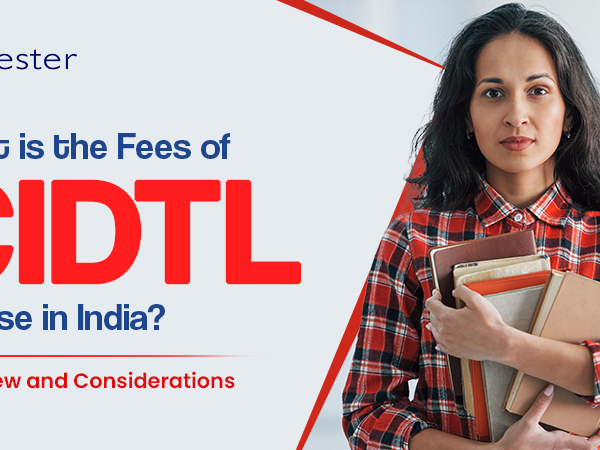They say it takes all kinds to make the world go round — and the same is true of stories. As a reader or writer, you may encounter many characters.
A story is something that happens to a character or because of a character and the subsequent changes that occur for said character. Basically, someone is one way, this thing happens, that someone is now different than before.
Characters make the story interesting. The entire story revolves around it. Sometimes you become a fan of a character instead of the story. For instance, the moral stories we read in our childhood, instead of remembering the moral of the story we tend to remember the character of the hero.
How about Cinderella?
Every time we found a lost shoe of a girl we thought about her. That’s how deep the character Cinderella impacted us during our childhood. Every story has one such character which draws us close to the story and makes it interesting.
If you are someone who is interested in literature or if you are a good reader/writer especially a fiction reader, you must be knowing some common characters every story has like a hero(protagonist), opposite to hero (antagonist), a changing character (dynamic), a non-changing character (static or flat) .
But these are not all types you should be knowing. There are more types than these basic ones and they have their unique characteristics. Apart from the basic types, there are confidante character, foil character, round character, stock character, and a Villain. There are also some archetypal character. Having knowledge about these characters is important especially if you want to write a story. Don’t let me explain about all the characters you must be aware of.
Characters you must know:
Protagonist
Every story has this type of character and evolves around it. It is the main character or the hero and is also called the protagonist. Every story has this type of character and evolves around it. It is the main character or the hero and is also called the ‘protagonist’, is basically a hero who shows his courage and faces all the challenges in the story. This is the character most of us admire, this character makes us love a particular book or a story. All the twists or suspense revolves around him or about him. This character is the soul of a story, how you project this character makes your book the bestseller or a flop story.
For instance: Harry Potter by J. K. Rowling, which shows the heroic characteristics of a boy who faces the evils and threats against his life and still strongly maintains the good virtues and saves others’ lives in difficult situations. Here Harry is the protagonist character. You might have watched all the series of Harry Potter but observe the entire story revolves around him all the time. His character is what made you fall in love with the book.
Deuteragonist
Most stories have a primary protagonist and a secondary Deuteragonist (or a group of Deuteragonist). This is the character who’s not exactly in the spotlight, but pretty close to it. They’re often seen in the company of the protagonist — giving advice, plotting against their rivals, and generally lending a helping hand. Their presence and close relationship to the protagonist gives the story warmth and heart, so it’s not just about the hero’s journey, but about the friends they make along the way. Of course, not all secondary figures are friends — some are arch-enemies — but even these less-friendly Deuteragonist still lend depth to a story.
Antagonist
This is the character which is exactly opposite to the protagonist. This protagonist causes all the troubles to our hero and continuously seeks the protagonist downfall. This character is as important as the protagonist. The character is mostly responsible for making the story interesting. He is the evil one (doesn’t always be evil) and responsible for all the troubles the hero faces. He makes the reader think about what happens next and will maintain the urge in the reader about will the hero be able to make it.
For instance: Lord Victory interesting antagonist character in Harry Potter, who killed Harry Potter’s parents. He also tries to kill Harry Potter in all parts of the series.
Static or Flat Character
They are two-dimensional in that they are relatively uncomplicated and do not change throughout work. They are not very significant yet they continuously support the protagonist in all his achievements. This may be a very small character and doesn’t make any difference in the story. But it depends on the writer. Sometimes he may make this character special gives some attractive features. It depends on his style of writing.
For instance: Let’s take an example from Harry Potter series again. Mr. Filch in the Harry Potter Series. He is a caretaker of the Hogwarts school of magic. He is a flat character because of his role of finding the students who break the rules of the school.
Dynamic Character
This is exactly the opposite of the static character at first seems to be a normal one but as the story goes on this character changes either positively or negatively. It can be anything from a supporter of the main character to a partner of the antagonist and may change its direction from positive to negative or negative to positive.
For instance: Neville Long bottom, who converts himself from a simple student of the school to a leader of the students and leads the students in a fight against the evil character Lord Voldemort.
Foil Character
This type of character can be easily identified. This character plays a role displaying a nasty and a contrasting behavior, highlighting the caring nature and other good qualities of the hero. It helps the reader to understand the nature of the protagonist in a better way.
For instance: Draco Malfoy who highlights and even helps make the good qualities and other virtues of Harry Potter stronger by being coward and nasty.
Confidante Character
This is the character who the protagonist character trusts. A story often has this character to ensure the development of heroic characters. This character needn’t necessarily be a human it can be animal too.
For instance: There are some characters like Hermione, Remus Lupin, Hagrid, Ron, Albus Dumbledore and others who played a confidante role Harry Potter series and helped to bring the strong characteristics of Harry Potter as a hero.
Round Character
Don’t get this one confused with Humpty-Dumpty. A round character is very similar to a dynamic one, in that they both change throughout the narrative.
The round character has a full backstory (though not always revealed in the narrative), complex emotions, and realistic motivations for what they do. This doesn’t necessarily mean they’re a good person — indeed, many of the best round characters are deeply flawed. But the readers can still be interested and excited to follow their actions because one can never be quite sure where they’ll be led or how they’ll change. The majority of great protagonists are not only dynamic but also round.
For instance: Harry Potter, Hermione Granger, Ronald Weasley in the Harry Potter series. They fit perfectly in this type as per the round character literary definition.
Stock Character
This type of character doesn’t have any importance just like flat character yet can be easily identified. They just come in to fill the spaces in the story.
For instance: Professor McGonagall is a teacher and seeks the students to follow the rules strictly. Her appearance is like that of a typical teacher with a conventional style of talking and has stereotypical manners.
Evil Character or Villain
This character can be just like antagonist character but the evil character is most active with more intensity to harm. It always creates a life-threatening situation for the hero (not necessarily hero it can create a situation to destroy the world too). This is considered as one of the main characters of the story. The eviler the character turns the more interesting the story becomes.
For instance: The main villain in the Harry Potter series, i.e. Lord Voldemort is an excellent example.
Tertiary Character
The reason that tertiary characters aren’t called ‘tertagonists’ is because they’re not important enough to really agonize anything or anyone. However, a well-rounded story still requires a few tertiaries. We all have them in real life, after all — the CCD you only see once a week, the random guy you sit next to in class — so any realistic fictional story should include them too.
For instance: Padma and Parvati Patil in Harry Potter (just in case you don’t recognize them we certainly don’t blame you.)
Archetypal Characters
Archetype characters have the original characters based on which other characters develop within the story. This is the character type which helps you create different characters with sub-types and different combinations of characteristics. Let us list out their subtypes too.
The Ego
- The hero: We have already discussed this type of character. He or she is the main character in the story who courageously fights against the difficulties and villains to prove his or her worth.
- The innocent: This type of person tries to be happy by being non-harmful to others and expecting the same from them.
- The regular guy: This character is somewhat similar to the innocent and tries to be connected with others.
- The caregiver: As the term suggests, this type of character is caring and helps others.
The Soul
- The rebel: This type of characters lives their life according to their own rules and fight to change the world.
- The creator: These characters are imaginative and believe in creativity.
- The lover: This character loves to be in the relationship and love the people, situations and work around him or her.
- The explorer: This character always seeks to go beyond the limits and explore the unexplored area of nature, life, and the world.
- The creator: These characters are imaginative and believe in creativity.
- The lover: This character loves to be in the relationship and love the people, situations and work around him or her.
The Self
- The magician: This type of character aims to understand the fundamental universal laws and tries to convert dreams into reality.
- The ruler: This type of character holds control over everything around him.
- The jester: This type of character believes in enjoying life to the fullest.
- The sage: This type of character looks for the ways to find the truth and attain the ultimate place.
“Fictional characters exist in only two places. Neither of which is on the printed page. They exist, first in the mind of the writer and, second, in the mind of the reader.”
– Maren Elwood
So make sure you create the best impression. Happy reading and writing!




